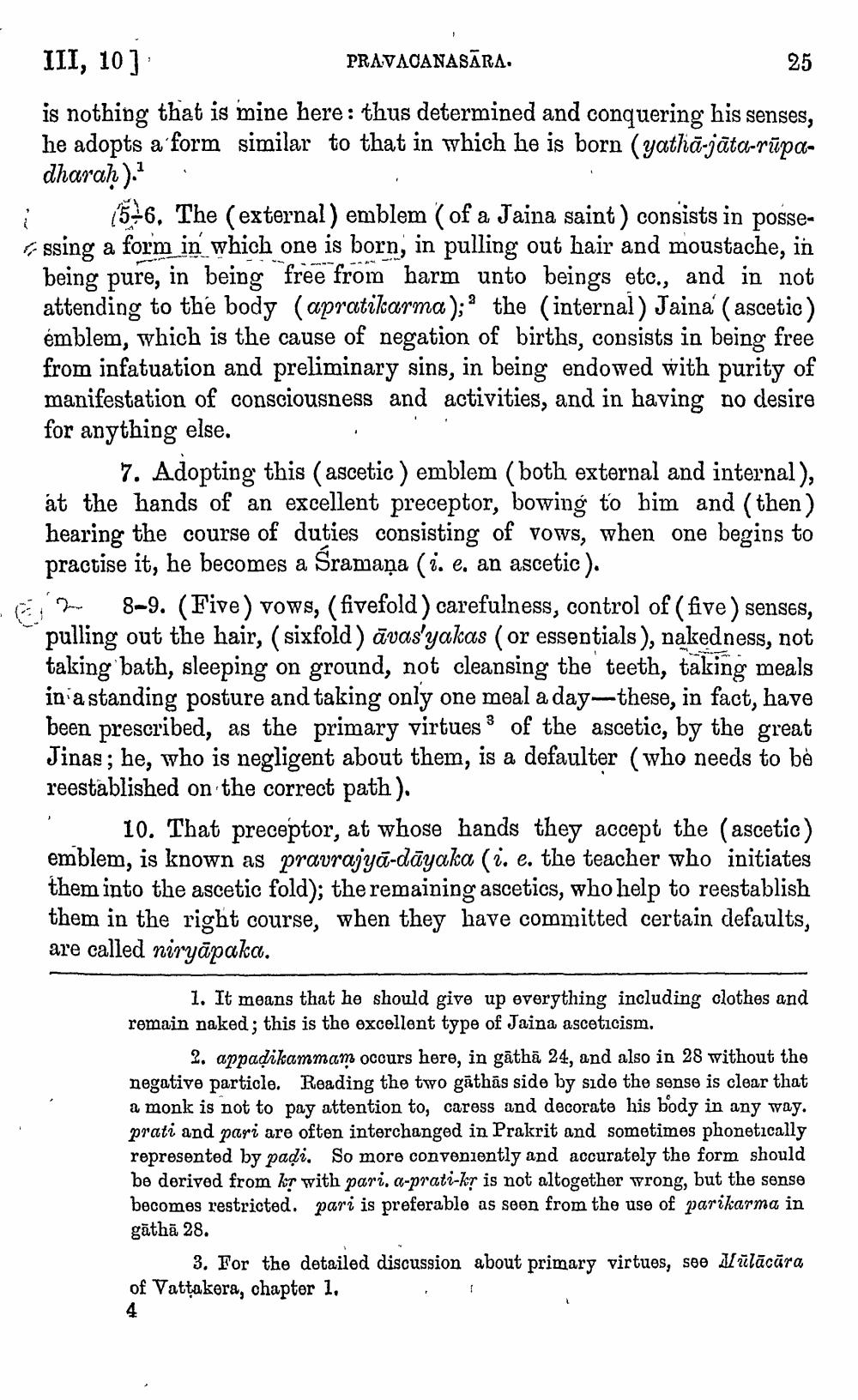________________
III, 10] PRAVACANASĀRA.
25 is nothing that is mine here: thus determined and conquering his senses, he adopts a form similar to that in which he is born (yathā-jāta-rūpa
dharah). i 1576. The (external) emblem (of a Jaina saint) consists in posse
ssing a form in which one is born, in pulling out hair and moustache, in being pure, in being free from harm unto beings etc., and in not attending to the body (apratikarma);? the internal) Jaina ( ascetic) emblem, which is the cause of negation of births, consists in being free from infatuation and preliminary sins, in being endowed with purity of manifestation of consciousness and activities, and in having no desire for anything else.
7. Adopting this (ascetic ) emblem (both external and internal), at the hands of an excellent preceptor, bowing to bim and (then) hearing the course of duties consisting of vows, when one begins to practise it, he becomes a Sramaņa (i. e, an ascetic). ,2 8-9. (Five) vows, (fivefold) carefulness, control of (five) senses, pulling out the hair, (sixfold) āvas'yakas (or essentials), nakedness, not taking bath, sleeping on ground, not cleansing the teeth, taking meals in a standing posture and taking only one meal a day-these, in fact, have been prescribed, as the primary virtues 3 of the ascetic, by the great Jinas; he, who is negligent about them, is a defaulter (who needs to be reestablished on the correct path).
10. That preceptor, at whose hands they accept the (ascetic) emblem, is known as pravrajya-dayaka (i. e. the teacher who initiates them into the ascetic fold); the remaining ascetics, who help to reestablish them in the right course, when they have committed certain defaults, are called niryāpaka.
1. It means that he should give up everything including clothes and remain naked; this is the excellent type of Jaina asceticism.
2. appadikammam occurs here, in gāthā 24, and also in 28 without the negative particle. Reading the two gāthās side by side the sense is clear that a monk is not to pay attention to, caress and decorate his body in any way. prati and pari are often interchanged in Prakrit and sometimes phonetically represented by padi. So more conveniently and accurately the form should be derived from kr with pari, a-prati-kr is not altogether wrong, but the sense becomes restricted. pari is preferable as seen from the use of parikarma in gāthā 28.
3. For the detailed discussion about primary virtues, see Alülācāra of Vattakera, chapter 1,




